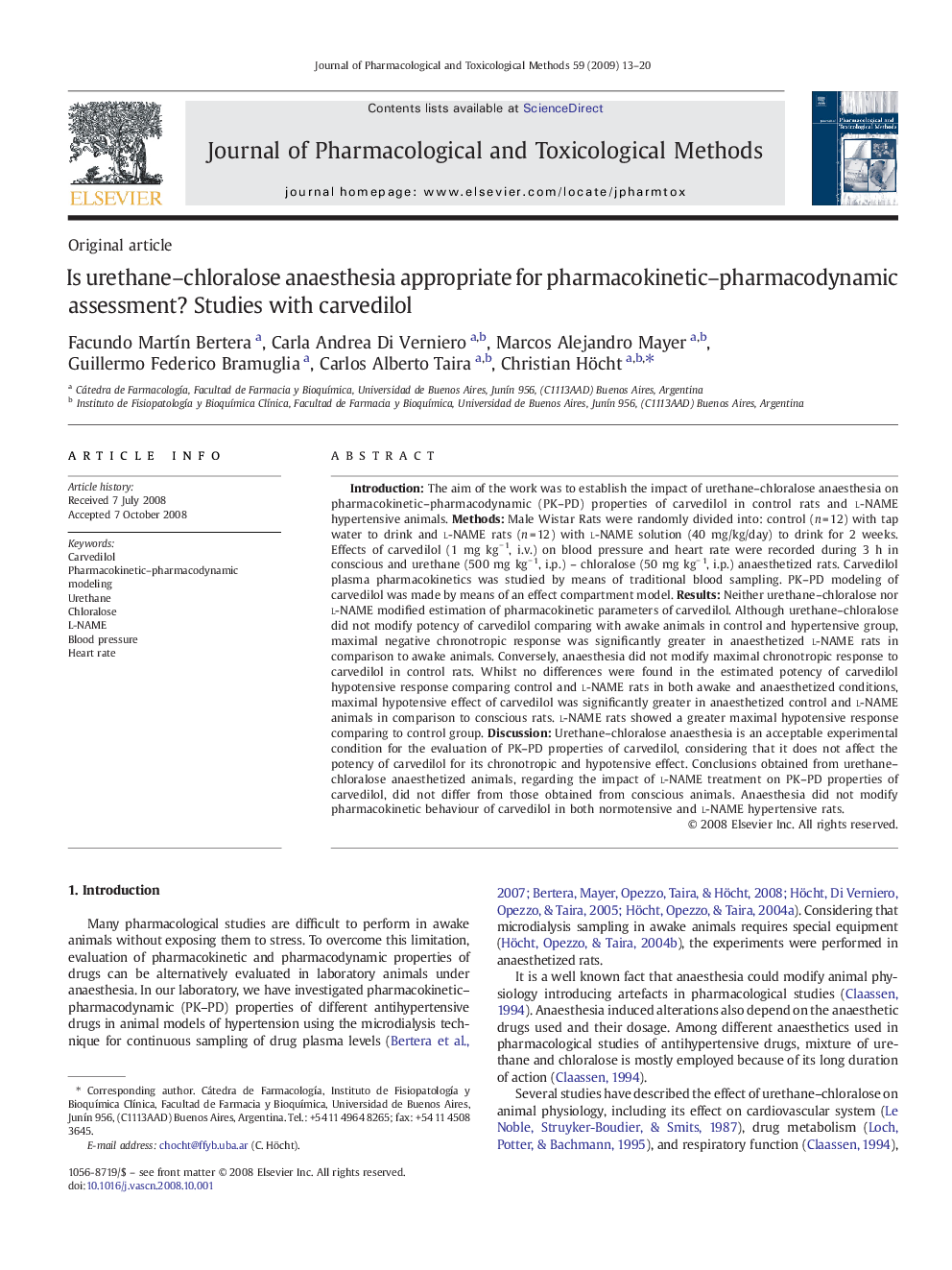| کد مقاله | کد نشریه | سال انتشار | مقاله انگلیسی | نسخه تمام متن |
|---|---|---|---|---|
| 2550256 | 1124543 | 2009 | 8 صفحه PDF | دانلود رایگان |

IntroductionThe aim of the work was to establish the impact of urethane–chloralose anaesthesia on pharmacokinetic–pharmacodynamic (PK–PD) properties of carvedilol in control rats and l-NAME hypertensive animals.MethodsMale Wistar Rats were randomly divided into: control (n = 12) with tap water to drink and L-NAME rats (n = 12) with L-NAME solution (40 mg/kg/day) to drink for 2 weeks. Effects of carvedilol (1 mg kg− 1, i.v.) on blood pressure and heart rate were recorded during 3 h in conscious and urethane (500 mg kg− 1, i.p.) – chloralose (50 mg kg− 1, i.p.) anaesthetized rats. Carvedilol plasma pharmacokinetics was studied by means of traditional blood sampling. PK–PD modeling of carvedilol was made by means of an effect compartment model.ResultsNeither urethane–chloralose nor L-NAME modified estimation of pharmacokinetic parameters of carvedilol. Although urethane–chloralose did not modify potency of carvedilol comparing with awake animals in control and hypertensive group, maximal negative chronotropic response was significantly greater in anaesthetized L-NAME rats in comparison to awake animals. Conversely, anaesthesia did not modify maximal chronotropic response to carvedilol in control rats. Whilst no differences were found in the estimated potency of carvedilol hypotensive response comparing control and L-NAME rats in both awake and anaesthetized conditions, maximal hypotensive effect of carvedilol was significantly greater in anaesthetized control and L-NAME animals in comparison to conscious rats. L-NAME rats showed a greater maximal hypotensive response comparing to control group.DiscussionUrethane–chloralose anaesthesia is an acceptable experimental condition for the evaluation of PK–PD properties of carvedilol, considering that it does not affect the potency of carvedilol for its chronotropic and hypotensive effect. Conclusions obtained from urethane–chloralose anaesthetized animals, regarding the impact of l-NAME treatment on PK–PD properties of carvedilol, did not differ from those obtained from conscious animals. Anaesthesia did not modify pharmacokinetic behaviour of carvedilol in both normotensive and L-NAME hypertensive rats.
Journal: Journal of Pharmacological and Toxicological Methods - Volume 59, Issue 1, January–February 2009, Pages 13–20